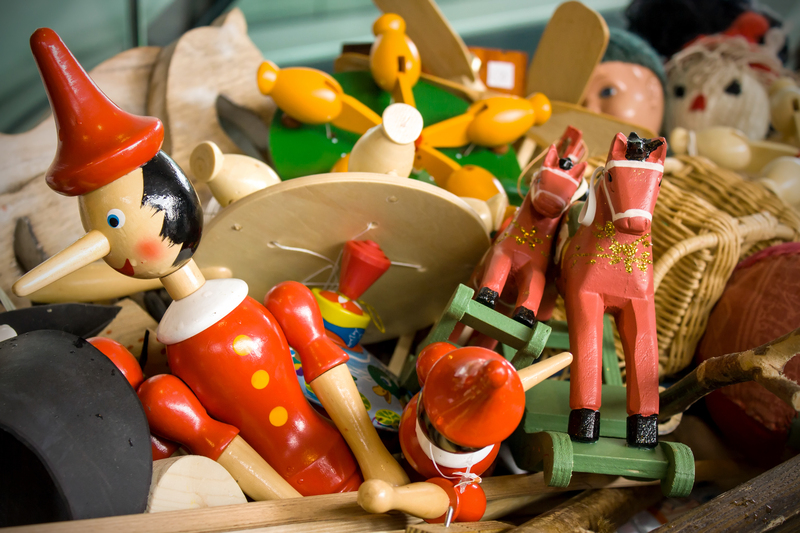Community Swap and Donation Events for Large Furniture: An In-Depth Guide
Are you facing the challenge of getting rid of an old couch, a bulky bed frame, or a dining set you no longer need? Planning to upgrade your home furniture while making a positive impact on your neighborhood? Community swap and donation events for large furniture are emerging as a popular and sustainable solution for homeowners, renters, and communities. In this comprehensive guide, we will explore the world of furniture swaps and donation events, their benefits, tips for organizing and participating, and how these initiatives create positive change in both the environment and local communities.

What Are Large Furniture Swap and Donation Events?
Community swap and donation events for large furniture are organized gatherings where residents can exchange, donate, or acquire sizeable furnishings--think sofas, beds, dressers, tables, and bookcases. These events provide an opportunity to recycle, upcycle, and redistribute used furniture among local individuals or families who need them, all while reducing landfill waste and strengthening neighborhood bonds.
Unlike smaller item swaps, these furniture exchange and donation days focus specifically on bigger pieces that are often harder to dispose of responsibly. They cater to both those looking to declutter and those seeking affordable or free furnishings.
Why Participate in Furniture Swap and Donation Events?
- Environmental Benefits: Landfills are overwhelmed with oversized furniture that takes decades to decompose. By giving your items a second life, you reduce waste and carbon footprint through recycling and reuse.
- Social Impact: Donating or swapping furniture can directly help families in need, students, or people escaping emergencies such as fires or domestic violence situations. It's a powerful way to give back to your community.
- Economic Advantages: Participants save money by acquiring items for free or at a minimal cost. This is especially valuable for those moving into new homes or students furnishing apartments.
- Convenience: It's difficult to transport or dispose of large furniture. Community swaps and bulk donation events often offer pick-up and delivery services, simplifying the process.
- Connection: These events foster neighborly spirit, networking, and even new friendships as residents work together to create a more sustainable community.
How Do Community Furniture Swaps and Donation Drives Work?
Community furniture swap events can take many forms, from informal neighborhood exchanges to large-scale organized fairs. Here's how most events are structured:
- Planning: A local organization, community center, or group of residents plans the event, sets a date and location, and spreads the word through flyers, social media, and local bulletin boards.
- Registration: Participants may register their intent to bring or pick up large pieces, sometimes listing the types of furniture available.
- Drop-off and Display: On the event day, donors bring their items to the location, where volunteers help with unloading and organizing the furniture for display.
- Swap or Selection: The event may be a true "swap" (bring something to take something) or simply a donation--where anyone in need can claim available furniture.
- Pickup and Delivery: Some events provide assistance or connect attendees with local movers or volunteers who help transport heavy items.
- Leftover Management: Unclaimed furniture may be donated to charities, thrift stores, or responsibly recycled by the organizing group.
Variations of Large Furniture Exchange Days
- Neighborhood Swap Meets: Held in public parks or community centers, open to all neighbors.
- Charity Donation Drives: Organized by nonprofits to benefit specific causes or groups in need.
- School or Church Fundraisers: Allowing community members to both donate and purchase gently used large furniture, with proceeds supporting local institutions.
- Online Community Swaps: Local social media groups or websites coordinate curbside pickups and drop-offs, adding flexibility to those who cannot attend in person.
Steps to Organize a Successful Community Large Furniture Swap
Interested in hosting your own community large furniture swap or donation drive? Here's a step-by-step guide:
- Build a Team: Organize a small committee of passionate volunteers. Diverse skills--from event planning to marketing to logistics--ensure smoother execution.
- Partner with Organizations: Collaborate with local nonprofits, schools, houses of worship, or municipal waste departments who can offer support, visibility, and possibly insurance coverage.
- Pick a Venue: Choose a location accessible to trucks and with ample space for large items--community centers, parking lots, or gymnasiums are ideal.
- Set Clear Guidelines: Define what types and conditions of furniture are accepted. Communicate size limits, cleanliness, and safety requirements.
- Promote the Event: Utilize flyers, local newspapers, community forums, and digital networks to publicize. Explain the benefits and logistics clearly to attract both donors and recipients.
- Arrange Transport Support: Organize a volunteer team or partner with local moving companies for pick-up and delivery services--especially for those unable to transport heavy pieces themselves.
- Plan for Leftovers: Pre-arrange for unclaimed items to be donated or recycled to avoid waste.
- Celebrate and Document: Take photos, share success stories, and thank all participants to inspire future events.
Tips for Donors: Preparing Your Furniture for Community Swaps and Donations
Making sure your furniture is in good shape and ready for its new home increases the item's chances of being chosen and reused. Here's what you can do:
- Clean Thoroughly: Wipe down surfaces, vacuum upholstery, and check for pet hair or stains.
- Check for Damage: Ensure sofas, beds, and tables are structurally sound; repair loose legs or replace missing screws if possible.
- Disassemble If Necessary: Take apart big items (like bed frames) to facilitate transport and storage.
- Label Parts: Attach any necessary nuts, bolts, or instructions in a bag taped securely to the item.
- Provide Photos or Descriptions: Including images or detailed descriptions can help match your item to a grateful new owner, especially at pre-registration events.
- Be Honest About Condition: If something has a stain or minor defect, disclose it up front to avoid surprises.
What Receivers Should Expect at Large Furniture Exchanges
If you're attending a community furniture swap and donation event hoping to find new pieces for your home, keep these tips in mind:
- Arrive Early: The best items go quickly. Early arrival offers the biggest selection.
- Know Your Measurements: Bring a tape measure and the dimensions of your room, doorways, or elevator if you live in an apartment.
- Come Prepared: If the event is self-move, bring blankets, straps, or a friend to help move heavy furniture.
- Be Flexible: Inventory varies. You might find something you didn't expect!
- Ask for Help: Event staff or volunteers may assist, but always check in advance for available services.
How Community Swap and Donation Events for Large Furniture Build Stronger Communities
Beyond the practical benefits of acquiring or getting rid of furniture, community swap events foster a sense of connection and purpose. People from different backgrounds work together to support sustainability, reduce landfill waste, and help less fortunate neighbors. These events can spark ongoing networks of support, such as social media groups for ongoing trades or periodic swap meets.
"Last spring's furniture swap brought our block together. I met neighbors I'd only waved to before, and a single dad down the street now has a sturdy dining table to eat with his kids. We can't wait to volunteer again!" -- Susan M., Volunteer Organizer
The Environmental Impact of Large Furniture Swaps
Each year, millions of tons of furniture are disposed of worldwide. Many items, made from wood, metal, and textiles, could be repaired or reused rather than trashed. Large furniture swap events divert items from landfills, promote recycling, and conserve resources required to manufacture new pieces. By participating, you make a direct difference.
Finding Community Large Furniture Swap and Donation Events
Ready to join in? Here's where to look for local furniture exchange events:
- Your City or Neighborhood Website: Check the calendar for upcoming sustainability and recycling events.
- Social Media Groups: Platforms like Facebook or Nextdoor often host community swap announcements.
- Nonprofit and Charity Organizations: Groups such as Habitat for Humanity, Goodwill, and local shelters frequently run furniture drives for those in need.
- Schools and Religious Centers: Many organize annual or seasonal swaps as fundraisers or outreach efforts.
- Public Libraries and Community Centers: Often serve as event venues and information hubs.

Frequently Asked Questions about Community Swap and Donation Events for Large Furniture
Is there a fee to participate?
Most community furniture swaps and donation events are free of charge, though some may request a small donation for organization costs or offer optional paid delivery services.
Can I bring items other than large furniture?
While the focus is on big furnishings, many events allow smaller household items like lamps or decor. Always check accepted item lists in advance.
What if my furniture isn't accepted or goes unclaimed?
Unsuitable or unclaimed items are often forwarded to charities, thrift stores, or recycled. Organizers can guide you on next steps and proper disposal methods.
Is there help for people who cannot move heavy objects?
Yes, many events coordinate volunteers, local moving services, or even municipal trucks--especially for seniors or people with disabilities.
How can I suggest or help organize a swap event in my community?
Reach out to your local council, neighborhood association, or community center. Offer your help and use this guide as a starting point!
Conclusion: The Power of Community Furniture Swaps and Donations
Community swap and donation events for large furniture are more than just practical exchanges--they are a testament to neighborhood creativity, environmental stewardship, and compassion. Whether you are looking to downsize, furnish a new home, or simply want to help a family in need, participating in or organizing these events brings both personal satisfaction and communal benefits. By supporting these initiatives, you contribute to a cleaner planet and a more connected society.
Consider joining or starting a furniture swap in your neighborhood--and spread the word that big changes start with a single, shared table or cherished chair.
```